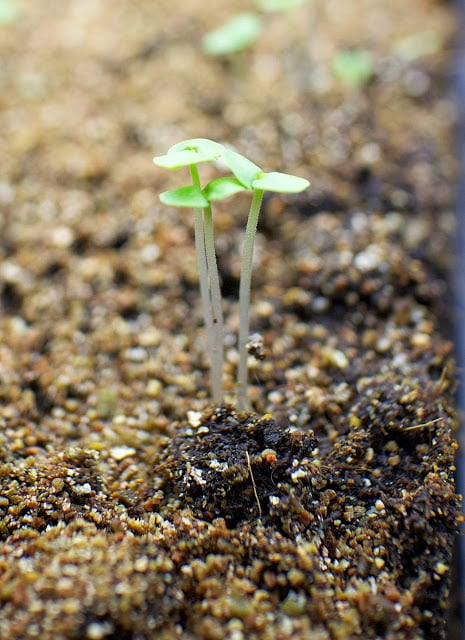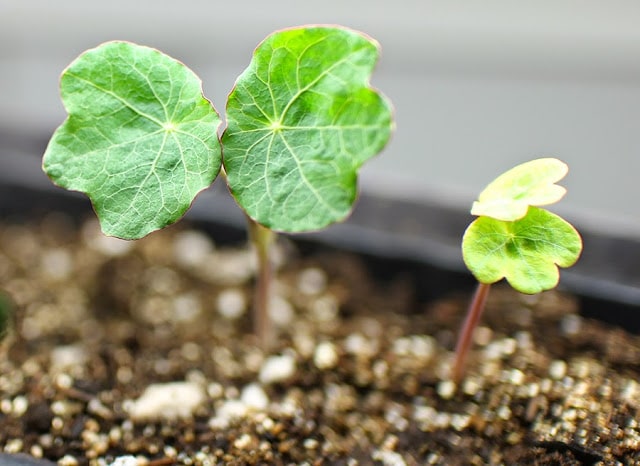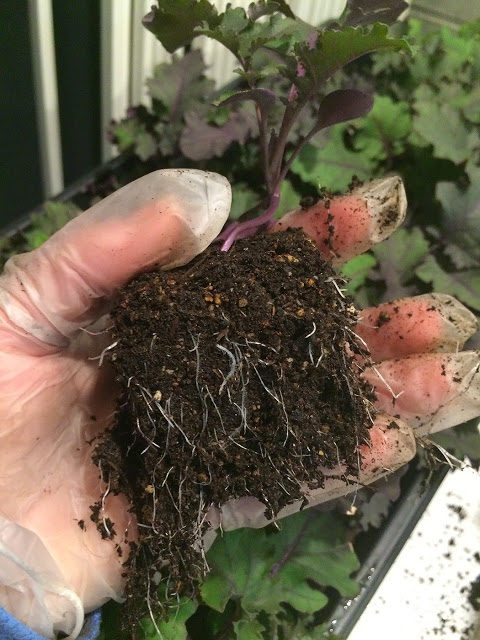 |
| Tiny basil seedlings pop up giving hope for delicious herbs to come. A few days past this stage I’ll thin out two seedlings so just one is left in each soil block or cell. |
Last year, as I spent every day after work tending to plants, watering, moving trays, transferring things from the growing area in the house to the temporary greenhouse I set up to grow on and harden off plants I swore I wouldn’t grow so much from seed. You can guess how that turned out.
This year I’m growing more different plants than ever from seed, and an increasingly large number of flowers. I’m trying to limit the amount of each thing I grow (I don’t really need 15 parsley plants) and made a conscious effort to add flowers that can easily be direct sown.
Here’s what I’m growing from seed this year (links take you to the specific seeds I ordered):
 |
| Baby nasturtiums |
VEGETABLES
When you’re starting that many things from seed (and trust me, seeing the list in print makes me realize I’ve really gone overboard this year), you need a plan. And that’s where my geek flag starts flying. I’m not a big spreadsheet person, but it’s the only way I’ve figured to efficiently manage this seed-starting operation. I keep it pretty simple, using a combination of information from the back of seed packets, Annuals and Tender Plants for North American Gardens by Wayne Winterrowd (out of print but I found a used copy on Amazon) and online resources including Margaret Roach’s seed starting calculator.
 |
| Plants grown in soil blocks are ready to pot on or transplant when the roots are coming out the sides. |
When I get a seed starting date (X number of weeks before the last frost), I count back from what I think will be our last frost. That part is a bit of a guessing game, but because in general things have been warmer than usual here (well they were until we got a foot of snow this week), I used the 50% frost free date, meaning based on past data, there is a 50-50 chance the risk of frost has passed for the year. This year that date is May 14.
For more information on how I start seeds, check out these articles:
What would you like to know?
Categories Here
Ads Here
Ads Here